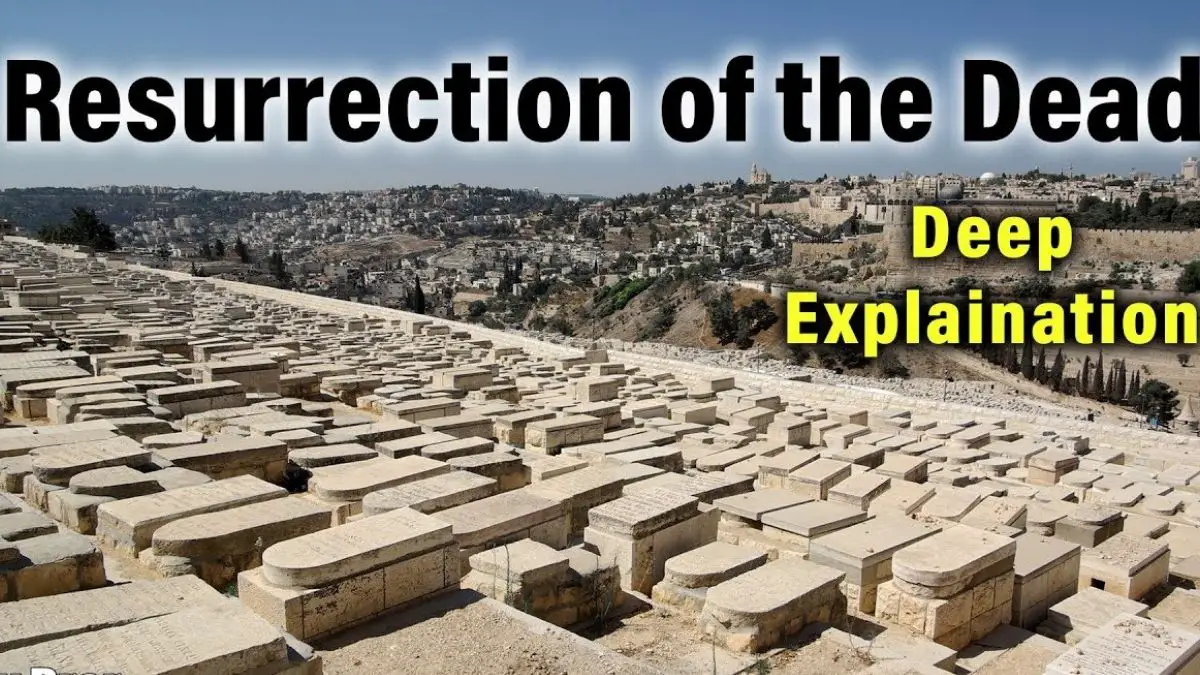The notion of resurrection and Olam ha ba has never been universally accepted in Judaism. Initially, the Pharisees (the forerunners of Rabbinical Judaism) deduced the concept from the Torah, but the Sadducees rejected the idea because it was not explicitly mentioned. Nonetheless, the belief in resurrection and life after death is fundamental in traditional Judaism.
Three messiahs in resurrection
All ideas regarding resurrection have one point in common: Resurrection cannot take place until the coming of the Messiah, who will usher in the Messianic Era. Actually, in Judaism, it is believed there will be a succession of three messiahs. The word messiah means “anointed” and, therefore, does not rule out more than one messiah.
The first messiah will be the first king who governs over a world that, while still physical, will be a wonderful place in which to live. People will still die, but they will lead long and healthy lives.
Some believe that the righteous dead will be resurrected at this time to experience this perfect world. After the death of the first messiah, his son, and then grandson, will succeed him. Since the Messianic Era spans 2,000 years, these messiahs will live a very long time!
1000 years of desolation
At the conclusion of the Messianic Era, the world as we know it, Olam Ha-Zeh (“this world”), will come to an end. A 1,000-year interval known as the years of desolation will follow. Nothing will be alive and all souls will be in the Realm of Souls engaged in a state of spiritual growth while awaiting the World to Come.
Olam ha-ba and Olam Haze
When the World to Come, or Olam Ha-Ba, arrives, each soul will be reunited with its body (that is, each human being will be resurrected), and humans will live in the World to Come for eternity. The Talmud and Midrash provide much of what we know of Olam Ha-Ba.
While we cannot be certain when the Messiah will arrive and set things in motion for the World to Come, we can be sure about one thing—that all of us will die in This World (Olam Ha-Zeh).
Although some have suggested that the wicked will not have a share in the World to Come, it is more widely held that all souls will be gathered together there. However, any particular soul’s place, or its share in Olam Ha-Ba, is largely based on how it lived and the mitzvot it performed as a human being.
Messianic era in judaism
Do not confuse the World to Come with the Messianic Era. Although sometimes the two terms are used interchangeably, this is incorrect. The Messianic Era that accompanies the Messiah’s appearance takes place in This World, which precedes the World to Come.
When will the messiah arrive?
Does Judaism have a timetable for when the Messianic Era and the World to Come will finally arrive? Yes, but like most schedules, it doesn’t always quite work out. The original plan was for the world to last 6,000 years, including 2,000 years of void before Abraham. The Messiah was slated to appear 2,000 years after Abraham and then there would be the 2,000 years of the Messianic Age. However, people have failed to adequately pave the way for the coming of the Messiah, so things are a bit off schedule. Today, we are well beyond the 2,000-year interval between Abraham and the Messiah.
All humans will enter the Olam Ha-Ba. Furthermore, because one’s position in Olam Ha-Ba is predicated upon righteousness and not just belief, the religion that any human being professed or followed during life on earth is irrelevant. All the righteous, regardless of their religious beliefs or cultural backgrounds, share the World to Come.


